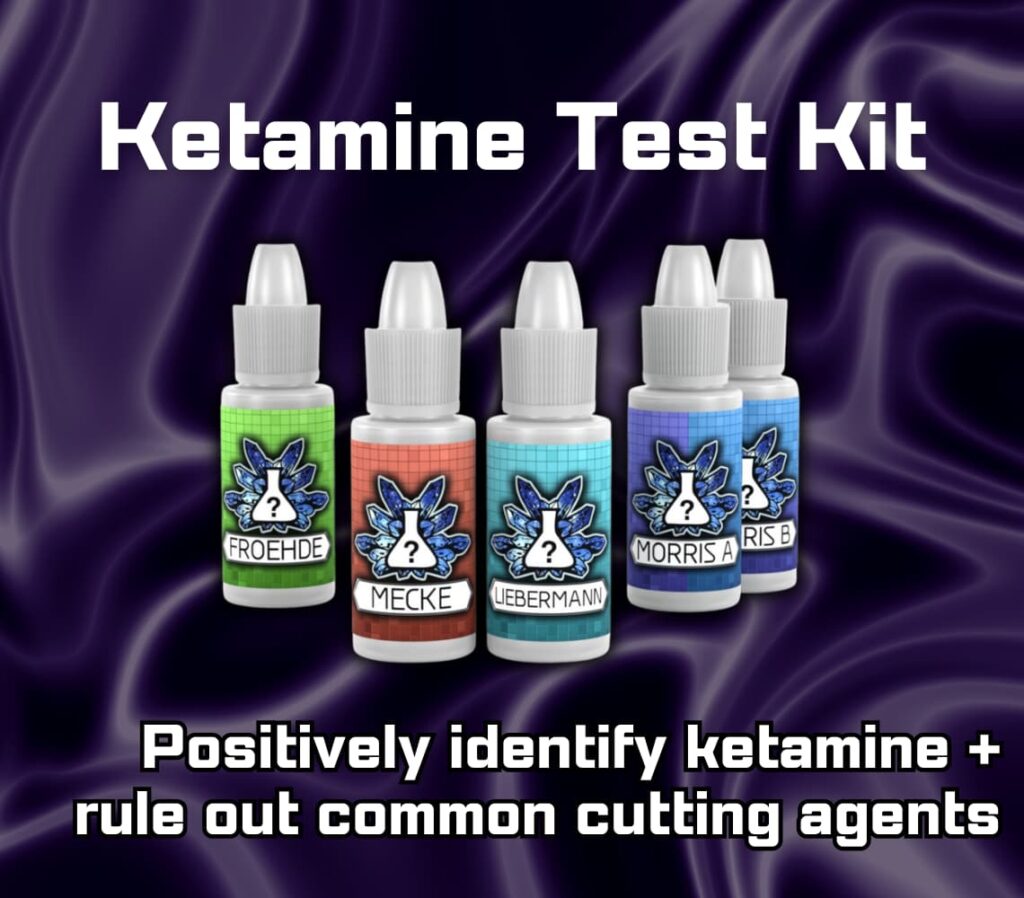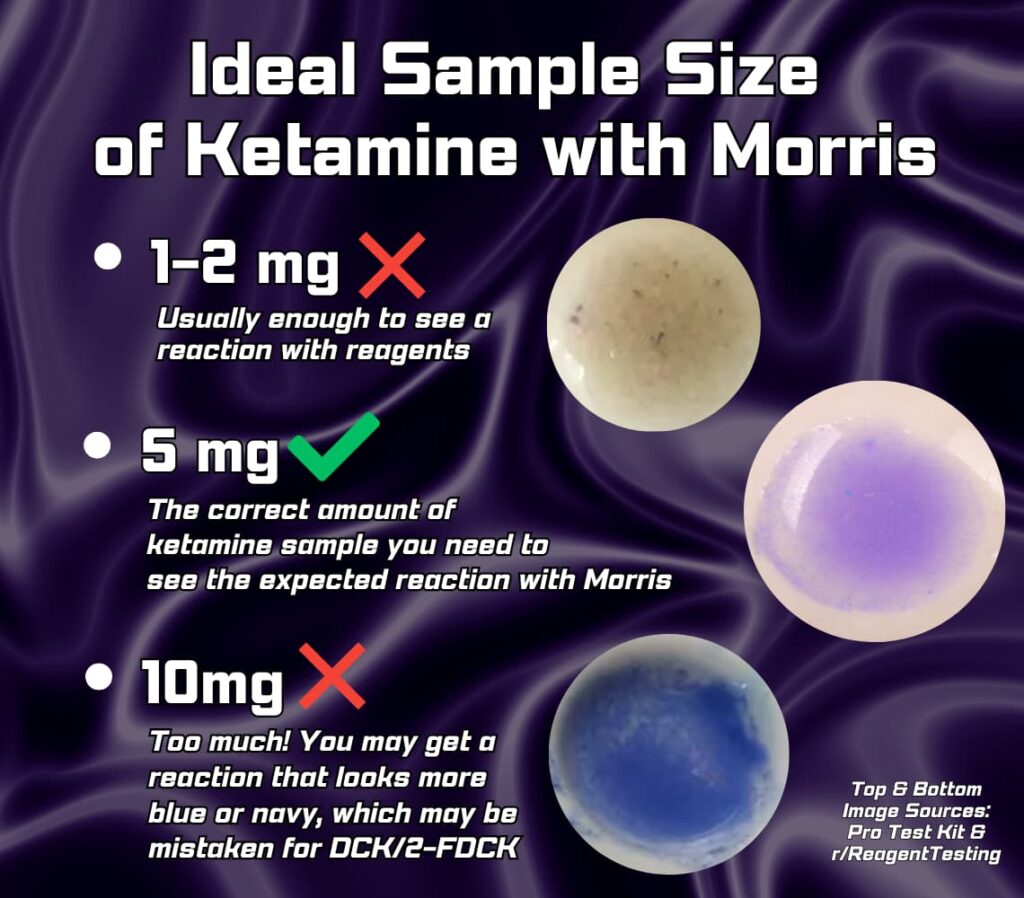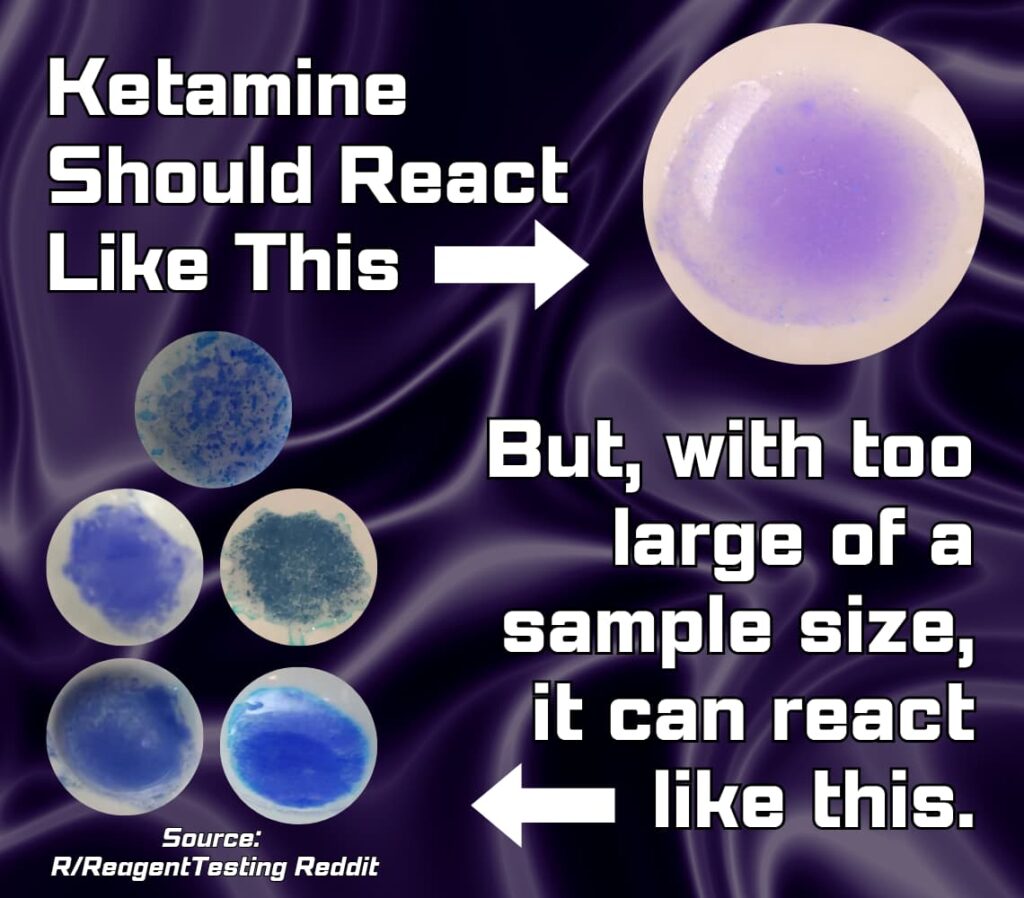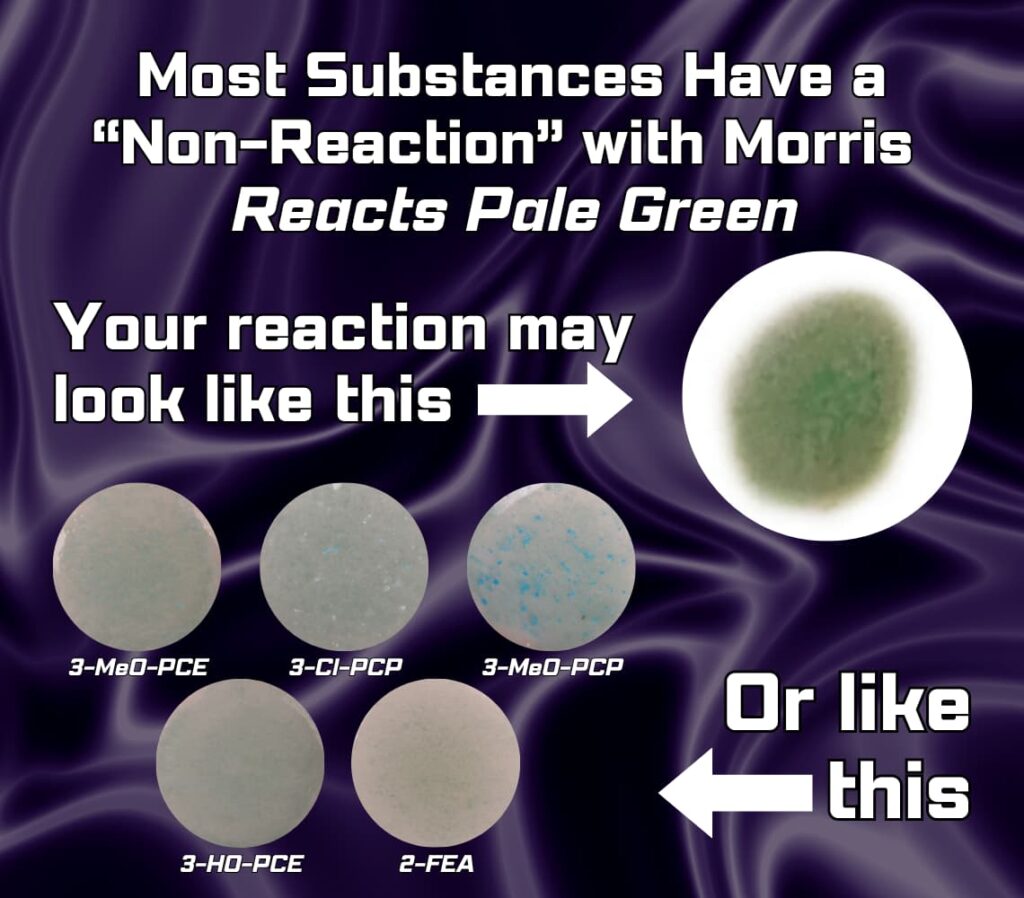Ketamine, the dissociative anesthetic used in medical, therapeutic, and recreational spaces, is only growing in popularity. With the rising prevalence of its use, and the frequency of its presence, the importance of accurately testing ketamine and flagging potential adulterants is greater than ever.
Testing for Ketamine? Avoid These Common Mistakes
Ketamine Drug Test
When testing for ketamine, we recommend a package of multiple reagents, to both positively identify ketamine, and screen for common cutting agents. One of the most common questions we receive involves the results interpretation of the Morris Reagent—the primary test for identifying ketamine.
In comparison to other reagents used for drug testing, Morris is a newer reagent, first becoming popular around 2021 for use in testing cocaine, ketamine, and other dissociatives. The testing protocol for Morris is completely unique, and deviates from the typical testing methods for other reagents.
With most reagents, you drop a bit of the chemical onto a very small amount of the substance, and watch the color change over 60 seconds.
With Morris, it’s a two-part test (similar to the Simon’s reagent), and it involves an extra step.
- Get a 5 mg sample of your drug.
- Drop Morris A, then Morris B onto your drug.
- Stir the sample for a full 30 seconds with a toothpick or knife tip.
After 30 seconds, when the color has stopped changing, compare this color to the booklet or app. Ignore any color changes after 60 seconds.
While the steps are not complicated, Morris requires one part of the process be more precise than typically necessary with other reagents. This is in Step 1—the sample size.
Why Sample Size Matters with Morris
Over time, we have received numerous questions about the results of a Morris / Ketamine test. Unlike most of our other reagents, Morris is a bit finicky.
With other reagents, we recommend using 5 mg or less of a drug to conduct a test, because reagents may react differently when the sample size is too large. However, the sample size has to be significant to truly throw off a color change, and most reagents will react with only a few crumbs of a substance.
Morris (specifically with ketamine) is a bit trickier, requiring a sample that falls within a very small window, neither too small, nor too large.
- The ideal sample size of ketamine when testing with Morris is 5 mg (half of one of our measuring spoons). With this amount, your result with ketamine should be a violet purple.
- If your sample of ketamine is too small (1–2 mg of ketamine), Morris will not react at all.
- If your sample of ketamine is too large, the color may look entirely different—a blue or navy color (closer to the expected result for DCK/2-FDCK).
This is a False Negative, because the tester will think that their sample does not contain ketamine, when in fact, it does. If you get a result that looks something like these examples, lower your sample size and test again!
Complete Ketamine Test Kit
Morris is unique in that many substances will not react with it at all. With most substances, Morris produces a muddy or pale green color after completing all of the steps. The color may vary slightly, depending on the substance, but most differ greatly from the vibrant purple that ketamine provides, the neon blue that cocaine provides, or the navy blue that DCK provides.
While the striking violet purple reaction does indicate the presence of ketamine, it is important to be aware that Morris can also react this way with a very different set of substances—synthetic cathinones.
This is what’s known as a False Positive, where the tester may believe they have ketamine, when they actually have a synthetic cathinone.
Luckily, when testing with the full Ketamine Spot Kit Package, this mistake can be avoided. When following up the positive identification that Morris provides with Liebermann, Mecke, and Froehde, it is much easier to distinguish between ketamine and a cutting agent or alternative, like a synthetic cathinone.
Morris is a reagent that is still under study! Formulations can differ depending on the test kit manufacturer, and results are still being analyzed and understood. If you have more information about Morris, feel free to contact us to continue growing our knowledge base on this useful, but particular reagent.









